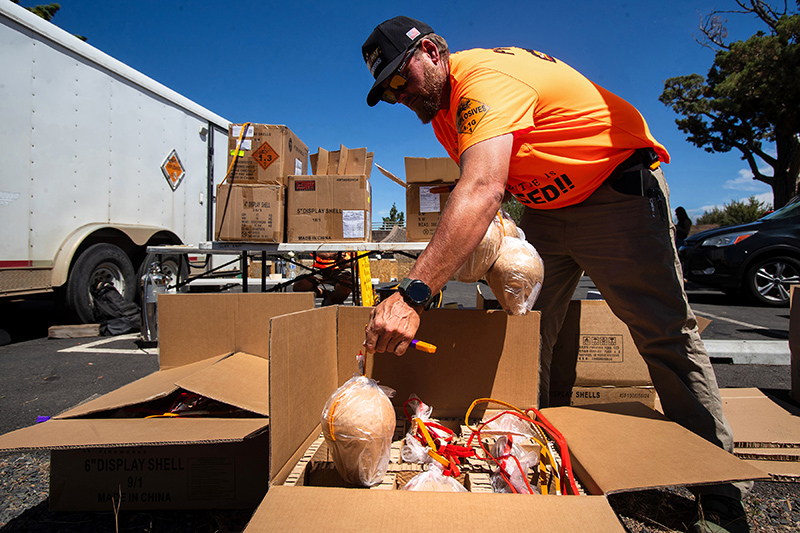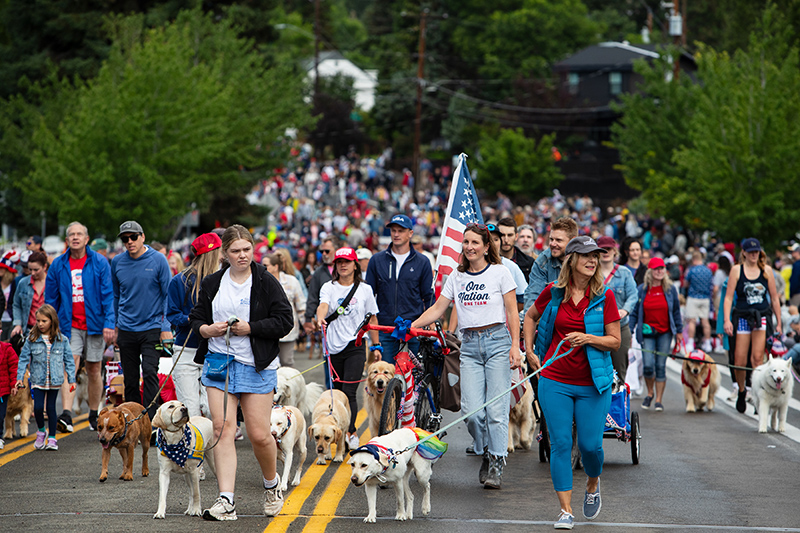These runners are not afraid of the dark and cold
Published 12:00 am Thursday, February 22, 2018

- With headlamps and reflective gear, members of the Spokane Distance Project, a men’s running club, head out for an evening run last month. Especially this time of year, running with a group can help with visibility — and with motivation, of course.(Colin Mulvany/Spokesman-Review/TNS)
Winter doesn’t stop runners from regularly hitting their stride outdoors with a few steps of precaution.
Veterans suggest key strategies will help you conquer ice, snow, frigid temperatures and often being literally in the dark. They say it’s all worthwhile to keep up a regimen of running outside year-round.
“The No. 1 challenge of running in winter is footing,” Bloomsday founder Dan Kardong said. In snow conditions, many runners use a cleat-type covering with tiny spikes that goes over the shoe’s sole. Still, he said, runners should keep an eye on the path ahead.
“Can you run and know when you put your foot down, it will stay where you put it? When you have hard-packed snow or ice, that can be a challenge. Even if I think I’m not going to have trouble with ice, I’m always looking for it and sort of maneuvering around.”
Chris Morlan, with the Spokane Distance Project men’s running club, echoes that traction and staying visible remain important all winter long.
“There are two critical factors, one being you’re probably running in the dark; the other is traction,” Morlan said. “If you’re running before or after the school or work day, even if there’s no snow, there is usually black ice.
“We always encourage runners to come wearing a headlight or flashing reflectors, or reflective gear, vest and gloves.”
He doesn’t like the feel of shoe coverings with spikes, so instead, he and some fellow runners embed a few flat-head or hex-head screws into the bottoms of their shoes.
“The beauty is you can adjust the depth in and out, and you won’t lose them. Because if you’re running with black ice on the asphalt, you need something to where you still have more of the sole of your foot on the ground,” said Morlan, who has used the trick for 20 years. He puts in two or three screws for the toe area, and two on the heel, then pops them out after temperatures warm up.
Curt Kinghorn, owner of two locations of Runners Soul, said one seasonal concern that runners often overlook is staying hydrated.
“People often think it’s colder, so I don’t need to hydrate as much,” he said. “In actuality, you need to hydrate more.”
Breathing in really cold air taxes the lungs, he said, and it’s often dry air.
“Moisture has to be added in order for the lungs to accept colder air, so it takes moisture out of the body to heat and moisturize the cold air, so you can dehydrate faster in colder conditions, or at least as fast. Hydrating is really important.”
Here are some other tips for winter running:
Clothing and layering
Jessicah Travis, at Fleet Feet Sports Spokane, helps run its Winter Warriors incentive program. Proper apparel is a constant topic.
“We always talk about layering, so the base layer closest to the skin should have moisture-wicking,” Travis said. “The second layer would be a warming layer that zips or half zips, and it could be removed if you get too warm.
“The third layer is one that protects you from the elements, so it’s an outer shell with a hood. We encourage them to look at the temperature, and they need to dress for 10 to 20 degrees warmer. That way, they’re not going to overheat.”
Dressing in layers does offer advantages, Kinghorn added, because runners can put back on a layer that’s tied at the waist if they start to feel chilled again.
“That way you can regulate body temperature,” he said.
Morlan suggests a synthetic base layer against the skin, like a polyester material.
“Make sure the layer closest to you is not cotton,” he said. “A synthetic polyester moves the body moisture away from the skin, so if you do get cold, then you have a second layer over that.”
If you wear a third layer, like a rain coat, he suggest that it have good venting under the arms.
Today’s technical wear for athletes has become very thin, Travis added, which helps runners to keep warm without excess bulk.
Watch your stride
Aric Trantum, of Spokane, runs year-round with a couple of groups. Winter conditions change his runner’s stride, he said.
“I tend to shorten my stride to make sure I have one good foot on the ground, and I slow down around corners,” Trantum said. “I’ve fallen at least once every year, that’s kind of a given, but if I slow down and shorten my stride, I can typically reduce the impact of the fall.”
Travis also encourages people to apply more of a marching run, with a shorter stride, “so you’re planting your feet.”
“It’s a midfoot strike, shorter-stride length, just planting your weight directly underneath you, instead of striding out and hitting your heel, which could allow for you to slip; not dragging your feet.
“We also recommend especially in icy and snow conditions to make sure you have traction, like an ice spike that stretches on over the bottom of your shoe that gives you added grip.”
Kinghorn said slowing down and shortening the stride will give runners more control, especially on corners or going downhill. Having the center of gravity over the feet lessens chances to slip or slide.
If possible in snowy conditions, he suggests planting that foot in areas where the snow might still be untouched and not yet packed down.
“There’s more traction on real snow, and it will take you further off the road,” he said.
Reflective gear and lighting
Because of short days and often overcast skies, many winter runners wear light-colored clothing, reflective gear and even lights to make them more visible to passing vehicles.
Kinghorn said headlamps help runners better see the terrain ahead for surer footing.
“Trucks or cars can see you with reflective gear,” Kinghorn added. “Just as the sun is coming up or just going down, people won’t always have headlights on.”
Morlan said some runners buy the flashing red lights that go on bicycles, but also can be attached to the runner’s armband or to a vest.
He wears a headlamp along with reflective gear when Spokane Distance Project runners go on their weekly night run near downtown Spokane.
Run with a group
Kinghorn encourages a buddy system or running in groups, which is extra incentive when it seems bleak outside.
“Some people have a tough time getting out of bed, especially when it’s dark and cold, so it’s good having a running partner, and you feel responsible to meet that person.”
Running in a group or with a partner also helps with visibility. Trantum said he’s seeing more runners each winter, and many of them team up.
“It seems like in the last couple of years, the amount of people running through the winter has gotten bigger,” Trantum added.
Extreme cold
Gloves come first for a lot of runners, including Kardong.
“If it gets really cold, you have to be careful you’re protecting your hands, and to a degree your face,” he said. “I wear gloves even when it’s not that cold. Your hands will get cold even if the rest of your body doesn’t, so I wear a lightweight pair of gloves.”
Kardong said he tends to run warm, so he usually layers if temperatures drop into the teens. “Put something on your head. If it’s in the single digits, you have to be pretty careful, you’ll need a cap and something over ears and nose.”
Travis said the Winter Warriors group also talks about exposure and how long people will be outside running. As long as they’re layered, many in the group go outdoors despite frigid temperatures.
“If it’s below negative 10 or windchill negative 10, we don’t go,” she said. “But if it’s anything above that, we run.”








